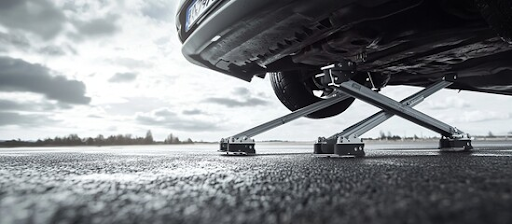FIX CAR ENGINE PROBLEMS
Your car’s engine is
the heart of your vehicle, and when something goes wrong, it can be stressful
and costly. However, many common engine problems can be diagnosed and even
fixed at home with a little knowledge and the right tools. In this article,
we’ll walk you through how to identify and resolve some of the most frequent
car engine issues. Whether you’re a seasoned DIYer or a beginner, this guide
will help you keep your engine running smoothly.
1. Engine Won’t Start
 |
| ENGINE WONT START |
Symptoms:
- The engine cranks but doesn’t start.
- No sound when turning the key.
Possible Causes:
- Dead battery
- Faulty starter motor
- Fuel system issues
How to Diagnose and Fix:
1.
Check the Battery:
o Use a multimeter to test the battery voltage.
A healthy battery should read around 12.6 volts.
o If the battery is dead, jump-start the car or
replace the battery.
2.
Inspect the Starter Motor:
o If you hear a clicking sound but the engine
doesn’t crank, the starter motor may be faulty.
o Replace the starter motor if necessary.
3.
Check the Fuel System:
o Ensure there’s fuel in the tank.
o Listen for the fuel pump priming when you turn
the key to the “on” position. If you don’t hear it, the fuel pump may need
replacement.
2. Engine Overheating
Symptoms:
- Temperature gauge in the red zone.
- Steam coming from the engine bay.
Possible Causes:
- Low coolant levels
- Faulty thermostat
- Radiator issues
How to Diagnose and Fix:
1.
Check Coolant Levels:
o Open the radiator cap (when the engine is
cool) and check the coolant level. Top it up if necessary.
2.
Inspect the Thermostat:
o A stuck thermostat can cause overheating.
Replace it if it’s not opening and closing properly.
3.
Examine the Radiator:
o Look for leaks or blockages in the radiator.
Flush the radiator if it’s clogged.
3. Check Engine Light On
Symptoms:
- The check engine light is illuminated on the dashboard.
Possible Causes:
- Loose gas cap
- Faulty oxygen sensor
- Misfiring engine
How to Diagnose and Fix:
1.
Check the Gas Cap:
o A loose or damaged gas cap can trigger the
check engine light. Tighten or replace it.
2.
Use an OBD2 Scanner:
o Plug in a code reader to retrieve the error
code. Common codes include P0420 (catalytic converter) and P0171 (lean fuel
mixture).
3.
Address the Issue:
o Replace faulty sensors or repair the
underlying problem based on the error code.
4. Engine Misfires
Symptoms:
- Rough idling
- Loss of power
- Jerking or hesitation during acceleration
Possible Causes:
- Worn spark plugs
- Faulty ignition coils
- Clogged fuel injectors
How to Diagnose and Fix:
1.
Inspect Spark Plugs:
o Remove and check the spark plugs for wear or
fouling. Replace them if necessary.
2.
Test Ignition Coils:
o Use a multimeter to test the resistance of the
ignition coils. Replace any faulty coils.
3.
Clean Fuel Injectors:
o Use a fuel injector cleaner additive or have
the injectors professionally cleaned.
5. Excessive Oil Consumption
Symptoms:
- Low oil levels between changes
- Blue smoke from the exhaust
Possible Causes:
- Worn piston rings
- Leaking valve seals
- Oil pan gasket leak
How to Diagnose and Fix:
1.
Check for Leaks:
o
Inspect the engine for
oil leaks around the valve cover, oil pan, and seals.
2.
Perform a Compression Test:
o
Low compression in one
or more cylinders may indicate worn piston rings.
3.
Replace Worn Components:
o
Replace piston rings,
valve seals, or gaskets as needed.
6. Strange Engine Noises
Symptoms:
- Knocking, rattling, or squealing sounds from the
engine.
Possible Causes:
- Low oil pressure
- Worn timing belt
- Damaged bearings
How to Diagnose and Fix:
1.
Check Oil Levels:
o Low oil can cause knocking sounds. Top up the
oil if necessary.
2.
Inspect the Timing Belt:
o A worn timing belt can cause rattling noises.
Replace it if it’s cracked or damaged.
3.
Examine Engine Bearings:
o Damaged bearings may require professional
repair or engine rebuild.
Conclusion:
Diagnosing and fixing
common car engine problems doesn’t have to be intimidating. By understanding
the symptoms and following these steps, you can save time and money on repairs.
Remember, regular maintenance is key to preventing many of these issues. If
you’re ever unsure, don’t hesitate to consult a professional mechanic.






























